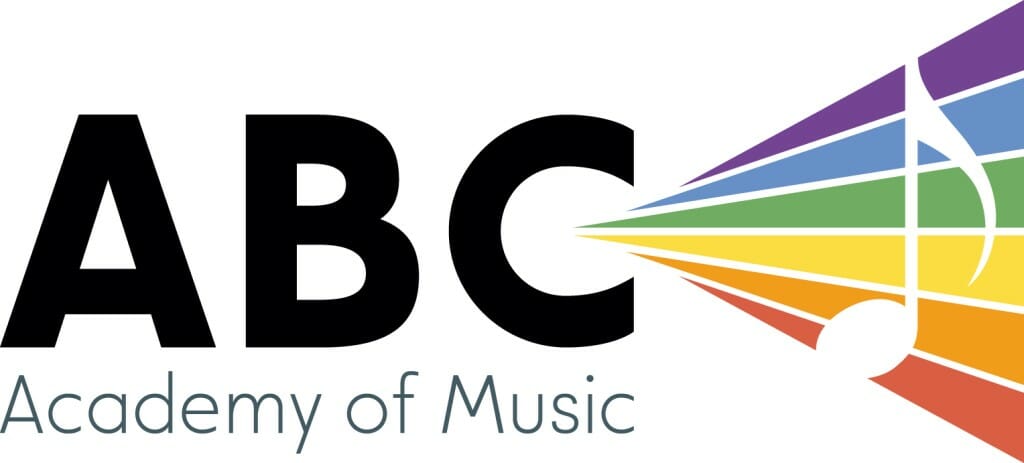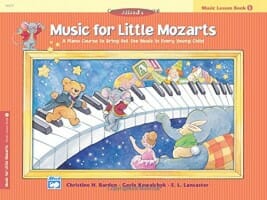Bachelor of Fine Arts (York University)
Katie Thurman is a singer, pianist, accompanist, and teacher based in Toronto. Her passion for music has been with her since childhood, and she is excited to have recently completed her undergraduate degree in music at York University.
Trained classically in piano, she continues to explore other styles including pop and jazz, as well as write her own compositions. Her vocal training is in both classical and musical theatre styles, as well as lengthy choral experience both in and out of school.
Katie spent 6 years singing with WIBI A Cappella, a collegiate-based group, during her time at York, and is proud to have competed with them twice in the ICCA (the very competition the Pitch Perfect films were based on!). Currently, she sings with the Toronto-based That Choir.
Katie loves all types of music, but spends most of her time listening to pop, indie, and alt-pop records.
Katie also writes her own songs and is working towards putting together an EP. Aside from music, Katie’s other passions include baking, film, and psychology. She loves teaching and is always pushing herself to grow pedagogically and musically!
Get to know Katie…Beyond the Bio!
Hobbies: baking, watching movies/TV, writing, yoga, hiking
Musical influences: Classical: Natalie Dessay, Maria Callas/Pop: Arcade Fire, Lana Del Rey, BANKS, Florence & the Machine, Rhye
Favourite food: Pasta
Least favourite food: Seafood
Favourite music: pop & alt-pop, indie/folk, dance, and all things Celtic
Favourite song: currently “Favourite Boy” by Half Moon Run
Favourite movie: Eighth Grade
Favourite movie music: A Single Man, music composed by Abel Korzeniowski?
Favourite musical theatre/opera: Les Misérables
Best quote from your teacher: Vocal teacher: “Just go for it! We want to hear ‘Katie-and-a-half'”.
Favourite quote: Motivation comes from work
Favourite book: The Handmaid’s Tale
Best thing about teaching at ABC: I like sharing my knowledge with students, and I learn from them too!
Latest Homework from Katie
Is Katie Your Teacher?
Sign up now to get your weekly assignments delivered, and never lose your homework sheet again!
Saturday, April 13th
Jack
Great Job keeping time for Jam by Michael Jackson today on cymbals plus toms! Also learnt how to play the rhythm in the drum beat. Next goal is to understanding how to identify sections and know when to add the “bam” on cymbals (fill)
Tova
Great job working on the Slow Groove #3 and variation A today. Always remember not to over play an individual instrument, if anything give us more bass drum! Right now hi-hat tends to overwhelm other things because of RH dominant hand. Also worked on adding in the pedal hi-hat back beat. At home try to give variation B on the same page a try, with all of the things above in mind!
Our next goal is learning Jujutsu Kaisen’s Kaikai Kitan till the end of semester. Will upload score to drive.
Next week will be xylo week. Familiarise yourself with Cupid by 50/50 up to chorus, I will upload the chorus onto Drive over the week
Tracie
Warm-Up: We talked about the idea of playing doubles efficiently, as there is a throw and grab motion. The grab motion is one motion and short, allowing the the second bounce to be short and as powerful as the initial stroke. Please work on the below at 75-80 bpm:
RRLL RRLL
RLRR LRLL
RRLR LLRL
RLRR LLRL (the groove from Turnstile Blues)
Turnstile Blues by Autolux
The groove is now solid! However we need to understand since we are playing the pattern now slow, the first and second beat is also slow. We have worked through the entire bar, however when stuck during practise, my advise is practise in smaller section (e.g. only beat 2+3 to smoothen up the transition, 2+3+4, then finally the whole bar)
We also tried adding in hihat. With everything in place, we are at eighth note equals to 100 bpm.
Jared
Warm-Up: solid work with Stick Control today!
Bring me to life by Evanescence
very solid read up to bar 25 so far! Several things to keep in mind:
- the pattern starting bar 18, second beat is a dotted rhythm, tip to hit that is to lay the bass drum after the hi hat on the n of 2
- at bar 25, the first bass drum hit also should come after the ride on down beat. Practise filling in that rest with a ride hit before we can fully play with the ride.
Get familiarise with everything till bar 33. We will be working on the next section next class. Also still try to spend some time planning the solo. A good solo doesn’t just come out of nowhere, but hard work!
Mario
Warm Up:
Grab and throw motion for the triplet exercise! It is going a lot better! Work on the triplet and double at around 75-80 bpm at home, prioritising evenness (within one hand as well as both hands sounding even) and staying in time!
My Friend by RHCP
The transition from hihat(open) to ride is getting a lot better! We will definitely revisit it next class, but we have also identified the following tricky spots:
fourth bar of chorus: following the R RL sticking, as well as keeping in mind to leave a 16th note gap between those two RH hit
one bar fill before second verse: drags! we will be working more on this technique during warmup next class!
essentially the left hand could either play a buzz or a double stroke, but our goal is to eventually tighten it up into one sound, similar to a flam. In the meantime just remember to keep the left hand low and relax, and be prepared to play the next note also on left.
Still use the drumset musician p11 ex to warm up brain —> one bar ride one bar hi hat —> then to the song
line 4 is sounding great and solid! give line 6 a try, it is just a slightly wonkier line 4 but we will identify it in future songs
Do it slow!
Aleksander
Warm-Up: work on Stick Control Page 9
Variation: first bar triplet, second bar 16th notes, practise with metronome (TIP: throw the 16th and relax for faster rhythm!)
New observation is that LH tends to stiffen up more, leading to uneven sound! I challenged you to try playing LH more in a RLRL pattern, somehow it became even –> keep LH in check: play more but not stiff!
great work with playing intro to Living On a Prayer. This week we worked on Verse and the various flair added to the hi hat. Bars to work closely with is second bar of verse, fourth and the sixth. Practise them slow! We will aim to play the entirety of verse next week and move on to0 pre-chorus!
Mateo
Apologies for the shorter lesson today! will be adding extra 15 to next week.
Warm Up: always remember to put ourselves in the best possible posture so we don’t make it hard for ourselves to play!
keep the back of hand always facing the ceiling, try to minimise that turning motion that happens when engaging a stick
Eye of the Tiger! all the fills are sounding solid! now try to play them in context and we will try to play through sections next class!
Jonah
Xylo week warmup: Bb major scales – also challenged him to try arpeggios in different positions (Bb D F Bb-> D F Bb D- F Bb D F etc). This one is tricky but definitely a super useful one as we practise getting our hands moved preemptively! Told Jonah to practise blocking them in two (Bb D and F Bb for example), and move swiftly to next after, that will practise that wrist movement required to moving preemptively!
worked on 12 bar blues together today! remember to follow sticking so we don’t trip up!
Please bring in material from Hannaford (snare drum and mallet or accessories) next week so we can identify what we can work with for Jonah going forward if we are to set further goals! Also I promise Jonah we will continue reading the four mallet solo “Yellow after the Rain” with him.
Preferred Books for Katie’s Students
Click to buy them here, and they’ll come right to your house! What could be easier?
Faber & Faber Piano Adventures
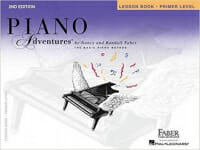
The 2nd Edition Primer Lesson Book introduces the keyboard, note values, and the grand staff. Students play in C 5-finger scale patterns, develop recognition of steps and skips, and learn letter names independent of finger number. Musicianship is built through the use of dynamics and coloristic experimentation with the pedal. The book is organized into units which represent the major concepts and skills. As new units are introduced, earlier concepts and skills are constantly reviewed.
Alfred's Adult Basic All-In-One

Alfred’s Basic Adult All-in-One Course is designed for use with a piano instructor for the beginning student looking for a truly complete piano course. It is a greatly expanded version of Alfred’s Basic Adult Piano Course that will include lesson, theory, and technique in a convenient, “all-in-one” format. This comprehensive course adds such features as isometric hand exercises, finger strengthening drills, and written assignments that reinforce each lesson’s concepts. There is a smooth, logical progression between each lesson, a thorough explanation of chord theory and playing styles, and outstanding extra songs, including folk, classical, and contemporary selections.
RCM Voice Repertoire

A Comprehensive Voice Series serves as the official resource for voice assessments of the Royal Conservatory Music Development Program. Featuring an outstanding selection of voice literature and supporting materials, this series offers a truly enriched learning experience to help ensure student success. As in previous editions, Resonance encompasses a rich and varied selection of Repertoire, Vocalises and Recitatives that students of all ages and voice types will find appropriate to their musical interests and level of technical ability.
Vocal Workouts for the Contemporary Singer
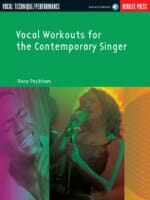
The vocal workouts in this much-anticipated follow-up to Peckham’s The Contemporary Singer are based on Berklee College of Music’s highly effective vocal method. This volume will help vocalists develop the voice through good vocal health, warm-up exercises, advanced techniques, stage performance advice and more. Includes companion online audio for ultimate interactive education!
Alfred's Teach Yourself to Sing
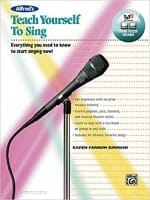
Learn to sing and open up a brand new world of musical knowledge with this exciting method from Alfred Music. Beginning with the fundamentals, you will learn about equipment used by singers, vocal health, and getting acquainted with reading music. You will then move right along to breathing, vocalizing, proper warm-ups, and singing songs, lesson by lesson, all while continuing to increase your knowledge of reading and understanding music. You will learn to sing an array of musical styles including pop, jazz, classical, and musical theater. Near the end of the book, you will be introduced to the idea of individual interpretation, which will help you color your songs with your own unique style. The book features a chord and scale chart for reference during and after your lessons.
